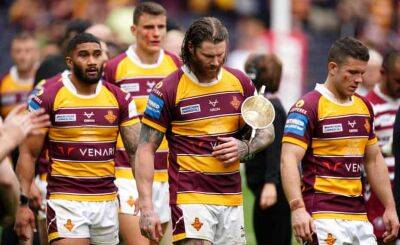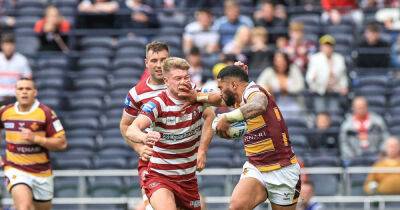Tottenham’s Challenge Cup final shows rugby league there is life outside Wembley
You do not even need to step inside Wembley to understand rugby league’s lengthy and rich history with the national stadium. A statue immortalising five of the game’s greatest players – Eric Ashton, Billy Boston, Martin Offiah, Alex Murphy and Gus Risman – has pride of place outside the ground but, in an ever-changing sporting landscape, history alone is not enough to guarantee a long-term future.
That never felt more evident for the game than on Saturday, when the Challenge Cup final took in new surroundings across the capital at Tottenham. For some traditionalists, moving the cup final away from Wembley is an act of sin, tantamount to rugby league turning its back on a history and heritage of which the game is fiercely proud. But as Liam Farrell and Thomas Leuluai lifted the cup for Wigan, it was hard not to think of an alternative, post-Wembley world for rugby league.
After the Rugby Football League was forced into a switch for the final this year because of a clash with the EFL playoffs, the early noises about Tottenham as hosts are promising. The Guardian has been told the Premier League club was exceptional to work with on all levels in terms of staging the event and has left the door ajar for a return at some stage, though it has already been confirmed that the final will return to Wembley next year.
But for more than one reason, Wembley is not the be all and end all for rugby league like it was a generation or so ago. Crowds have dipped at the national stadium for a few years, with the last crowd in excess of 70,000 in 2016. That was also the last year the Club Wembley total of around 10,000 seats was automatically included in the attendance figure, so since returning to Wembley in 2007 crowd numbers have always






